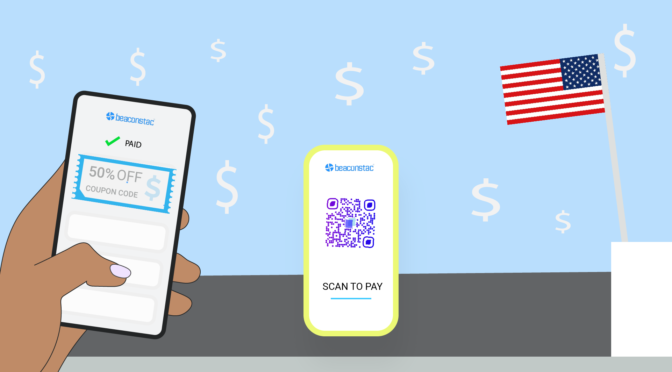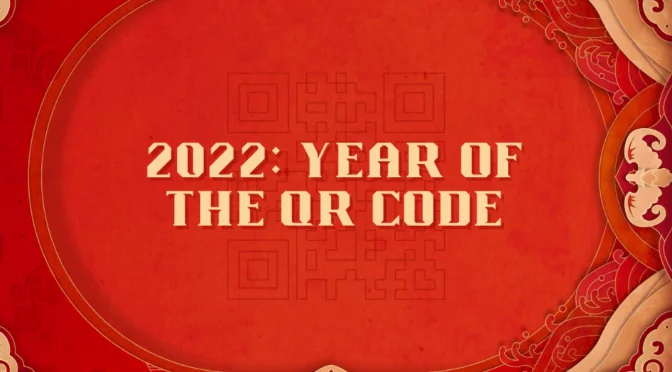In the whirlwind of technology and creativity, QR Codes have risen to prominence like nothing else.
Once utilized primarily for tracking product information, QR Codes have evolved into a globally unifying technology that bridges the physical and digital worlds.
You can attribute this surge in QR Code usage to the impact of the COVID-19 pandemic. It prompted the need for contactless solutions worldwide.
With QR Codes being used on everything ranging from street signs and billboard advertisements to product packaging and restaurant menus, spotting them has become easier than ever.
Table of contents
- Origin of the data
- QR Code creations (by country) between 2021 and 2023
- Top countries with the highest QR Code scan rates
- QR Code creation by industry in 2023
- QR Code creation by business size in 2023
- Most trending type of QR Codes in 2023
- Outlook for the rest of 2023
- QR Code adoption – forecast
- Frequently Asked Questions (FAQs)
Origin of the data for Uniqode’s QR Code trends report
With over 50,000 customers utilizing our QR Code solution, Uniqode’s QR Code trends report aims to open up the window into the global usage and adoption of QR Codes.
We dove deep into these insights to bring you a detailed report of the latest QR Code trends with fascinating facts, figures, and predictions.
In this article, you can also discover QR Code statistics based on the trends across nations and industries, detailed comparisons with previous years, and QR Code forecasts and predictions.
QR Code creation has skyrocketed by 4x between 2021 and 2024

The year 2024 is expected to witness a substantial global upsurge in QR Code adoption. This would be fueled by brands and businesses acknowledging the QR Code’s potential to engage customers, provide valuable information, and streamline user experiences.
In the past year alone, the number of QR Codes created has shown a staggering 238.06% increase from 2021. Businesses across retail, hospitality, education, healthcare, and many other industries have embraced QR Codes to uncover creative customer engagement touchpoints and deliver pertinent information.
Factors such as ease of use, ease of creation, and versatility have contributed to the exponential growth in QR Code creation.
By mid-2023, we’ve already witnessed a 43.20% growth compared to the same period in 2022. This indicates a growing interest in using this technology to connect with consumers effectively.
Furthermore, the growth rate of QR Code creation shows no signs of slowing down as more businesses and individuals recognize their potential in reaching a tech-savvy audience.
The US leads the global QR Code creation market
Zooming in on the top QR Code-producing nations reveals the US firmly in the spotlight in 2022. The nation boasted a 248% surge in QR Code creation by generating over 200,000 QR Codes compared to 2021.
As of mid-2023, we have already reached 86% of that figure. Our estimations project QR Code creation in the US will soar past 300,000 towards the end of this year.
We also noticed a few other countries picking up on this trend in 2023. Canada witnessed an outstanding 4x increase, escalating from 5,500 QR Codes in 2021 to an impressive 20,000 QR Codes by mid-2023.
Australia, the UK, and the UAE are among the top five countries with the highest QR Code creations in 2023.

We also spotted a notable rise in QR Code creation this year in Asian countries compared to 2022. For instance, Singapore has risen with 77% growth, and Sri Lanka has shown a phenomenal 1782% growth.
The QR Code trend in Singapore also points to the COVID-19 pandemic that drove both large and small businesses to embrace digital payments. This shift also aligned with the government’s goal of transforming into a less-cash society, emphasizing safety and efficiency.
We also attribute this growth to the pervasive use of mobile devices.
In Sri Lanka, the ease of use and perceived usefulness have significantly influenced the users’ intentions to embrace QR Code mobile-driven payment systems.
This positive reception has also translated into increased user satisfaction and recommendations for the widespread adoption of this technology.
“The common use of QR Codes is making people more comfortable with them (QR Codes), and this is leading to increased adoption even in countries that previously weren’t using QR Codes to their full potential. Marketers are seizing this chance to connect directly with customers.” says Sharat Potharaju, CEO of Uniqode.
A noticeable rise in QR Code scanning across different regions
Our report suggests countries in North and South America, Asia, and Australia are racing ahead with QR Code adoption.
This surge is also primarily due to the COVID-19 pandemic, which accelerated the demand for touchless solutions.
Since the beginning, QR Codes have been used as a contactless way to access menus, make payments, and access information, aligning perfectly with hygiene and safety needs.
When it comes to Australia, the rise in QR Code statistics and the rise in the trend point to its use for product and event details, followed by offers and app downloads, reflecting their versatile applications across various sectors.
However, some regions, such as the Middle East and Europe, are moving forward at a slower yet steadier pace. For instance, countries such as the Netherlands, Germany, Belgium, Saudi Arabia, and Kuwait are making gradual but positive strides in adopting QR Codes in 2023.
In a rapidly changing world, these regions are showing that sometimes, a steady and deliberate pace can also lead to significant and positive outcomes.
Newfound growth in QR Code scans in Central and Latin American countries

We found a tremendous surge in QR Code usage and adoption, particularly in Central and Latin American countries.
Moving into 2023, countries such as Honduras and El Salvador have experienced over 400% growth in using QR Codes compared to 2021.
We are also witnessing a strong emergence of QR Codes in the Bahamas, French Guiana, and Curaçao in CAM (Central America) and LATAM (Latin America).
The rapid embrace of new payment techs, such as mobile payments and RTPs, fuel the QR Code revolution in these regions.
Excitingly, nations including Brazil, Peru, Uruguay, and the Bahamas, are exploring Central Bank Digital Currencies (CBDCs). In addition to this, El Salvador is embracing crypto assets, further boosting QR Code payments in these regions.
Moreover, Latin America boasts one of the world’s fastest-growing QR Code payment scenes, with success stories such as Mercado Pago and HugoPay leading the charge.
In short, QR Codes for risk-free events, unified payment systems, immersive physical experiences, and packaging labels for product information are some of the key drivers fueling these changes in trends.
QR Code scans surged by 57% globally, in 50 countries with the highest scan rates

Smartphone penetration is fueling the surge in QR Code scans worldwide.
According to Statista, in 2022, around 89 million mobile device users in the US engaged with QR Codes, marking a 26% increase from 2020.
Our data says in 2021, 32 million QR Code scans were recorded across the 50 countries with the most QR Code scans.
The US led the pack with 25 million scans, followed by Canada with 1.7 million, Saudi Arabia with 1.2 million, and Puerto Rico with 500,000 scans.
Fast forward to 2022, the QR Code trends showed no signs of slowing down. In fact, we found an astonishing 57% surge in QR Code scans across the top 50 countries, making it a global phenomenon.
Surprisingly, the UK secured the fourth position in 2022 with nearly 10 million QR Code scans, despite not ranking among the top five countries in 2021. This is closely followed by Australia, with 8.7 million scans.
However, the US maintained its dominant position, commanding a massive 74.78% share and generating 38 million QR Code scans, contributing significantly to overall QR Code scans worldwide in 2022.
With this upward trajectory, we can confidently anticipate further growth in global QR Code scans as we move into the latter half of 2023.

QR Codes pioneer the marketing and advertising landscape

QR Codes have gained significant traction in marketing and advertising. Our data finds a remarkable 323% increase in QR Code creation in the industry from 2021 to 2023.
You can find QR Codes all over the place now. They’re on product packaging, printed materials, promotional campaigns, and even in-store, making shopping and brand interaction more interactive.
This QR Code surge shows how marketing and advertising are changing. It’s not just about ads anymore; it’s a race to engage prospects in new and exciting ways.
Businesses are adapting to this change, using QR Codes to bridge the gap between online and offline and building stronger connections with their audiences.
|
Amplifying engagement the right way: Here’s how Lionsgate did it What set Uniqode apart was its ability to provide real-time QR Code interaction data on a geographical map, a significant upgrade from the less detailed location tracking offered by other solutions. This feature allowed Lionsgate to assess the effectiveness of print-based promotions with precision. The holistic approach to QR Code management by Uniqode made it an invaluable asset for Lionsgate’s movie marketing activities. “The platform has performed great. Based on our ROI, it’s been terrific. It’s definitely one of the better purchases we’ve made since I’ve been here. It did what we needed it to do. As I’ve said, it just works!” – Mike Caballes, Digital Marketing Consultant, Lionsgate. |
The consumer goods industry witnessed an astounding 247% jump in QR Code usage—from 2021 to 2023
As per our QR Code statistics data, custom QR Codes (or QR Codes you can design as per your brand) are behind this astounding growth.
In 2022, the industry saw a massive 301% increase in QR Code creation compared to 2021. This QR Code trend continues in 2023, with a 247% increase from 2021 halfway through the year, surpassing 86% of the total QR Codes made in 2022.
With the growing QR Code popularity and usage, especially for product packaging, brands can share loads of information without running out of room on packaging, shelves, ads, and materials. There is no need to cram everything into the package.
CPG brands are also ramping up their QR Code adoption and using these QR Codes to keep consumers in the know and make shopping easier. They’re turning packaging, ads, and materials into interactive experiences, highlighting the increased QR Code adoption in bringing the digital world into the store. It’s a fresh way to connect with shoppers and build trust.
We predict steady growth to continue in this sector throughout the rest of 2023 based on the current QR Code trends.
In 2023, the hospitality industry faced a steep 65% decline in QR Code usage compared to 2022. You can attribute this decline to the growing adoption of automation solutions.
Fast food restaurants now commonly employ kiosks, and automats are making a resurgence. Labor shortages have prompted restaurants to seek automated alternatives, reducing the reliance on QR Code-based services in this sector.
However, even now, QR Code adoption remains prevalent as they are being used in several parts of the food and beverage sector for order and payment processing, contactless menus, and customer feedback, enhancing efficiency and safety in the dining experience.
The real estate industry, on the other hand, is seeing an 8% increase in QR Code usage from 2021 to 2023, affirming the growing QR Code popularity in various sectors.
QR Codes help realtors streamline information access for clients, eliminating unnecessary complexity. They not only ease access to listings but also enhance their appeal. This way, they can shift the focus from selling a product to effectively conveying its value to the market.
Meanwhile, the finance sector has also surged with an 18% uptick in QR Code adoption, improving customer services. This adoption is due to several compelling reasons:
- QR Codes have streamlined loan applications
- QR Codes have accelerated loan approval processes
- QR Codes have enhanced security with end-to-end encryption, replacing traditional authentication methods
These industries’ smart use of QR Codes shows how they adapt to changing times, making things simpler and more efficient for customers and clients.
Small businesses lead the QR Code revolution amidst change

Inflation has been a concern since the first half of 2022, and businesses of all sizes and sectors are increasingly seeking better ways to navigate these challenges.
While many have traditionally embraced technology for enhancing customer experiences, a significant shift is underway.
Now, even small businesses have started leveraging QR Code technology, taking the lead with a 38% share of all QR Codes created in 2023.
Our data suggests small businesses use QR Codes to enhance customer interactions and strengthen brand loyalty. This not only makes it easy for businesses to connect with customers at different stages of their journey but also improves customer satisfaction, strengthens brand loyalty, and stays competitive in a changing market.
Although small and mid-size businesses are leading QR Code usage, we expect a significant increase in QR Code creation across businesses of all sizes in 2023.
As QR Code applications diversify, their usage continues to evolve

Brands are using a range of QR Code types to shape unique and purpose-driven experiences.
Why use QR Codes? Well, from campaign QR Codes to tracing the effectiveness of marketing campaigns to QR Codes for restaurant menus streamlining dining experiences, each code variation serves a distinct function. The QR Code usage statistics provide clear insights into the adoption and effectiveness of these codes.
As per our data, at the top, we have the ubiquitous website QR Code with a 19% influx in usage from 2022, simplifying access to comprehensive online content. This rise further emphasizes the growing trend of QR Code usage in various domains.
Feedback form and link page or URL QR Codes are also gaining momentum this year and are ready to make an impact. These QR Code statistics reflect the evolving dynamics of how businesses and consumers engage.
Branded and custom QR Codes are redefining contact exchange, driving focused interactions, and keeping communications agile. They also enhance the perceived safety of QR Codes by instilling trust and recognition. It’s almost like a digital handshake, reassuring users that their interaction is secure and reliable. This also enables brands to tailor their engagement strategies, building a more profound and long-lasting connection with their audience.

Outlook for the rest of 2023
As we move into the remainder of 2023, QR Code usage is set to sustain growth globally.
They are projected to surge by an impressive 43.20% compared to 2022, inching closer to the incredible milestone of 470,000, with an average monthly creation rate of over 40,000 QR Codes.
This marks a 2x increase from the same period in 2022, underscoring the expansion and widespread utility of QR Codes in our evolving digital landscape.
Unlocking the Future Potential of QR Code Technology
With our current insights, there’s no doubt that we can expect a promising and sustained future for QR Codes.
Our data suggests a minimum 70% overall growth in QR Code generation between 2023 and 2027—equivalent to nearly 800,000 QR Codes! And this resurgence is about more than just numbers.
These QR Code statistics and trends are pointing toward using mobile devices in our daily lives.

Looking ahead, this powerful technology will evolve into crucial mobile gateways, unlocking a world for branded augmented reality experiences powered by the rapid expansion of 5G connectivity.
And now, QR Codes are key to delivering personalized consumer experiences in modern marketing and advertising. Recent data on QR Code usage shows a significant increase in their popularity worldwide. It’s evident that these scannable codes are becoming common in our everyday lives. The rising interest in tailored marketing methods is likely to further boost the use of QR Codes. As companies and marketers explore the potential of QR Codes further, they will discover more ways to make the most of them, aiming to provide consumers with timely and relevant information.
Moreover, Gen Z and Millennials increasingly rely on QR Codes for various purposes. This demand empowered brands to effortlessly connect with young consumers who are already seeking relevant content and information.
During the pandemic, it was used only for retrieving restaurant menus and accessing discounts. Now, it has expanded to sharing contact information such as business cards, downloading apps and games, accessing product details, and even shopping.
There is no denying that the opportunities and customer insights QR Codes offer are vast, opening up new frontiers for marketers and consumers alike. And hence, this is more than a trend. It is a pathway to a more connected and promising future for all.
Frequently Asked Questions (FAQs)
1. Are QR Codes still relevant in 2024?
Yes, QR Code trends are increasing, and they are still highly relevant in 2024, with a growth rate of 43.20% from 2022. They are becoming even more popular, with their applications expanding across various industries.
2. What are some QR Code alternatives?
While there are alternatives such as NFC and barcodes, QR Codes continue to lead the way due to their ease of use and diverse applications, making them the preferred choice for many businesses.
3. What percentage of people scan QR Codes?
In 2021, QR Code scans reached an impressive global scale, with a whopping 30 million scans recorded across 50 countries. The year-on-year growth of QR Code scans stands at an impressive 57%, reflecting the increasing trend of people engaging with QR Codes for various purposes.
4. What percentage of Americans use QR Codes?
In 2021, the US led global QR Code scans with 25 million scans. By 2022, this number surged to 38 million, representing a massive 74.78% share of total scans among the top 50 countries. This indicates a significant percentage of Americans are actively using QR Codes, and the trend continues to rise.















